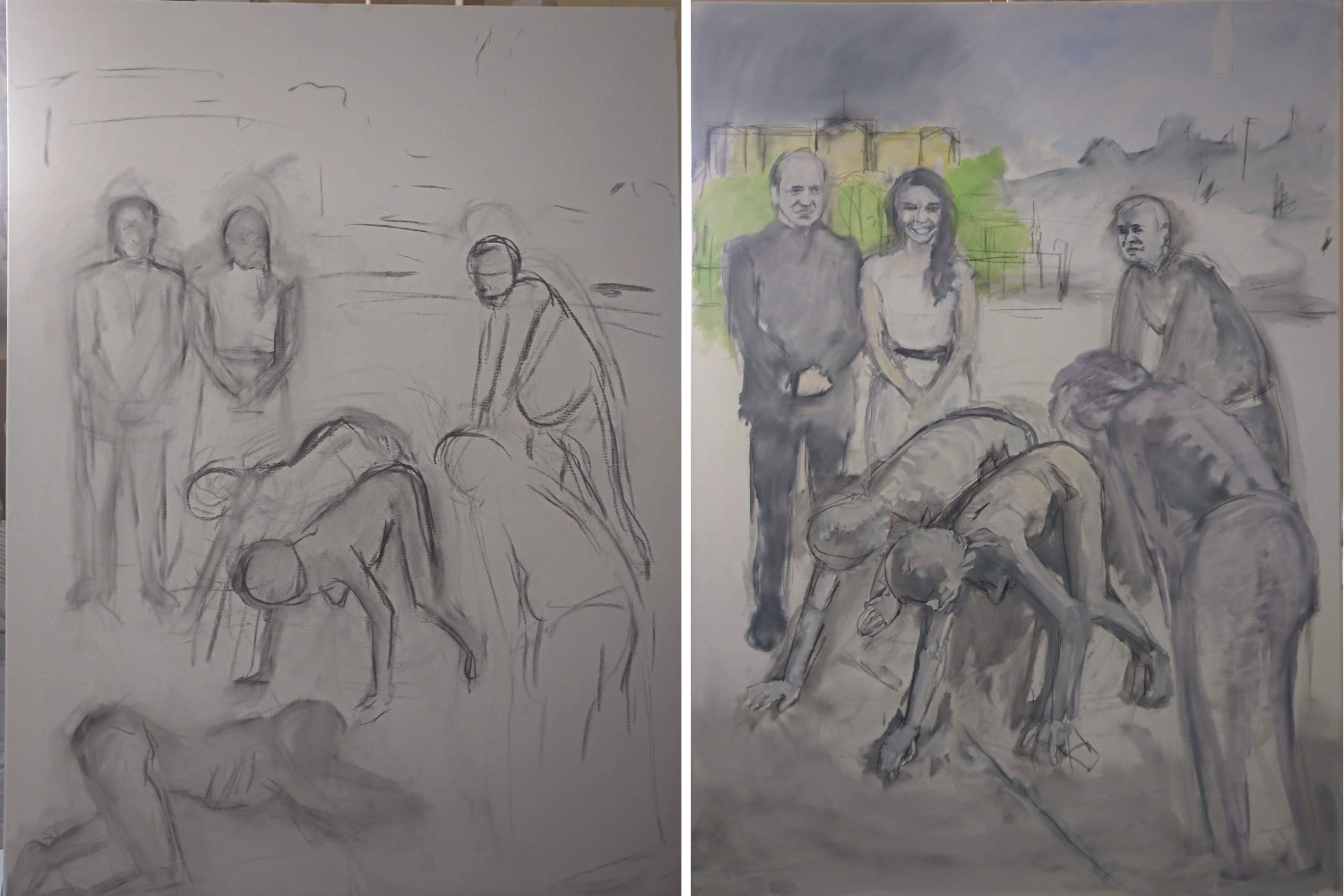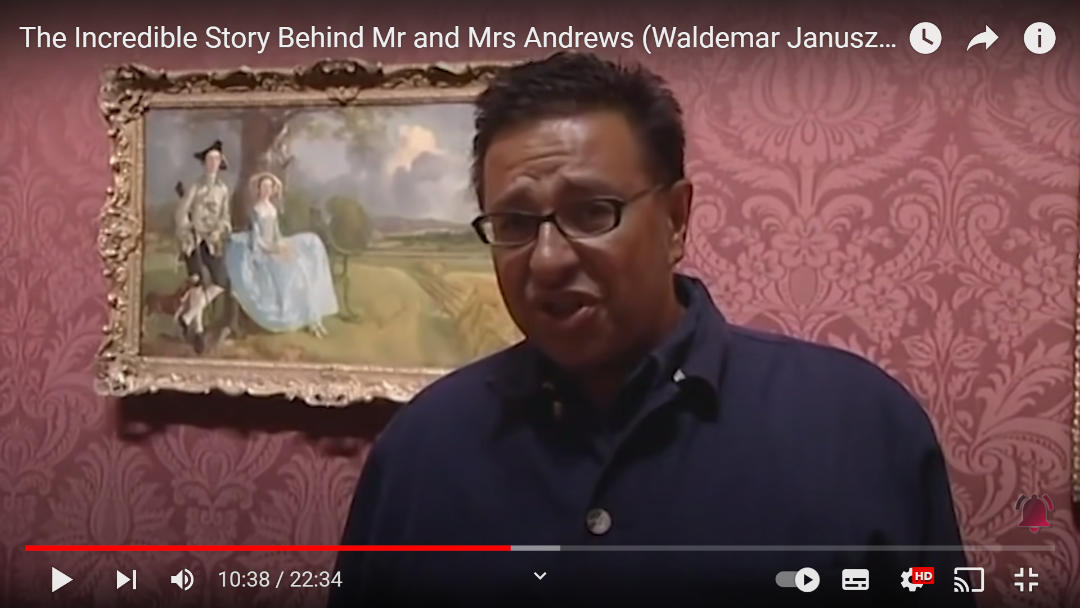
The Gleaners – a painting about social exclusion and inequality
It took longer than expected, but I finished it in the end. I needed the help of a terrific life model who helped me rework the foreground figures, and somewhat changed the look of the whole painting. I feel that when I put my easel in front of someone, whether it is a paid model model or paying portrait customer, the process of painting them is very much a collaboration. This was another example of a successful collaboration with a model where the end result is different, and better than my original design.

“The Gleaners” started off as a simple reimagining of the Millet painting of the same name. I had a clear idea of what I wanted to produce, but ideas don’t always transfer smoothly onto the canvas. As with the subject of Millet’s painting, I wanted to say something about social exclusion and inequality.

It all began when I happened upon a still image from the 1978 film “The Shout”. Susannah York is seen scurrying across the floor on all fours, like some primeval creature. I saw similarities in this pose with the main figures in Millet’s “The Gleaners”, and immediately set about composing a contemporary version of that painting, with the creepy black and white photo of Susannah York as reference for the main figures. And that was the start of my problems.

I actually started this project just over a year ago! Early progress between first sketch and the initial underpainting was good. But there is a month between each of the three progress photos shown here (above and below,) and there’s not a great deal of progress. By the end I had even thrown in a SpaceX Starship departing a desolate wasteland in the distance. But for all my tweaks, the main figures of the gleaners were just not progressing.

And then I watched a tv documentary that changed everything.
It was an episode of the Art Mysteries (Sky Arts) where the wonderful Waldemar Januszczak uncovers secret meanings hidden within Thomas Gainsborough’s painting “Mr and Mrs Andrews”. You can watch it on YouTube here.

Gainsborough may have been alluding to the Enclosure Acts, which denied commoners access to what had previously been common land. The intended theme for my painting was social exclusion and inequality, so I thought it quite apt to borrow the layout from “Mr and Mrs Andrews”. It also offered a tidy way of opening up the stage, allowing the introduction of more actors. Fenced off green fields were a fitting backdrop for what I was trying to say, and I could bring the desolate wasteland to the foreground.

I would like to say that it was all plain sailing from then on. But that wasn’t the case. The change of background helped, and I added a number of figures to the group, which worked well. But the problem was with the “gleaners” in the foreground. From the very inception of this project over a year ago, they were meant to be the focal point of this painting. But I couldn’t get these emaciated figures to work.

Search for a life model
By this stage (August 2022) I realised that I would have to find a model to work with, in order to finish these three figures. I posted about it here.
Luckily I found a model who was interested in the project and had a great look for the painting. In fact, the whole look of the painting changed after working with her. Out went the emaciated look, in came the haunting backward stare. From here on it was plain sailing, and the painting was finished for its debut at the Cluster Contemporary Art Fair.

I particularly enjoy working with models who are invested in the project – who are interested in the creative process. When I showed this painting to big crowds at the Cluster Contemporary exhibition in London, it was the backward stare of the model that drew most attention from visitors – something I hadn’t planned until after I met her. When I look at my more successful compositions, I see how they are very much a collaboration between myself and the model, just as a portrait is a collaboration between artist and sitter.








